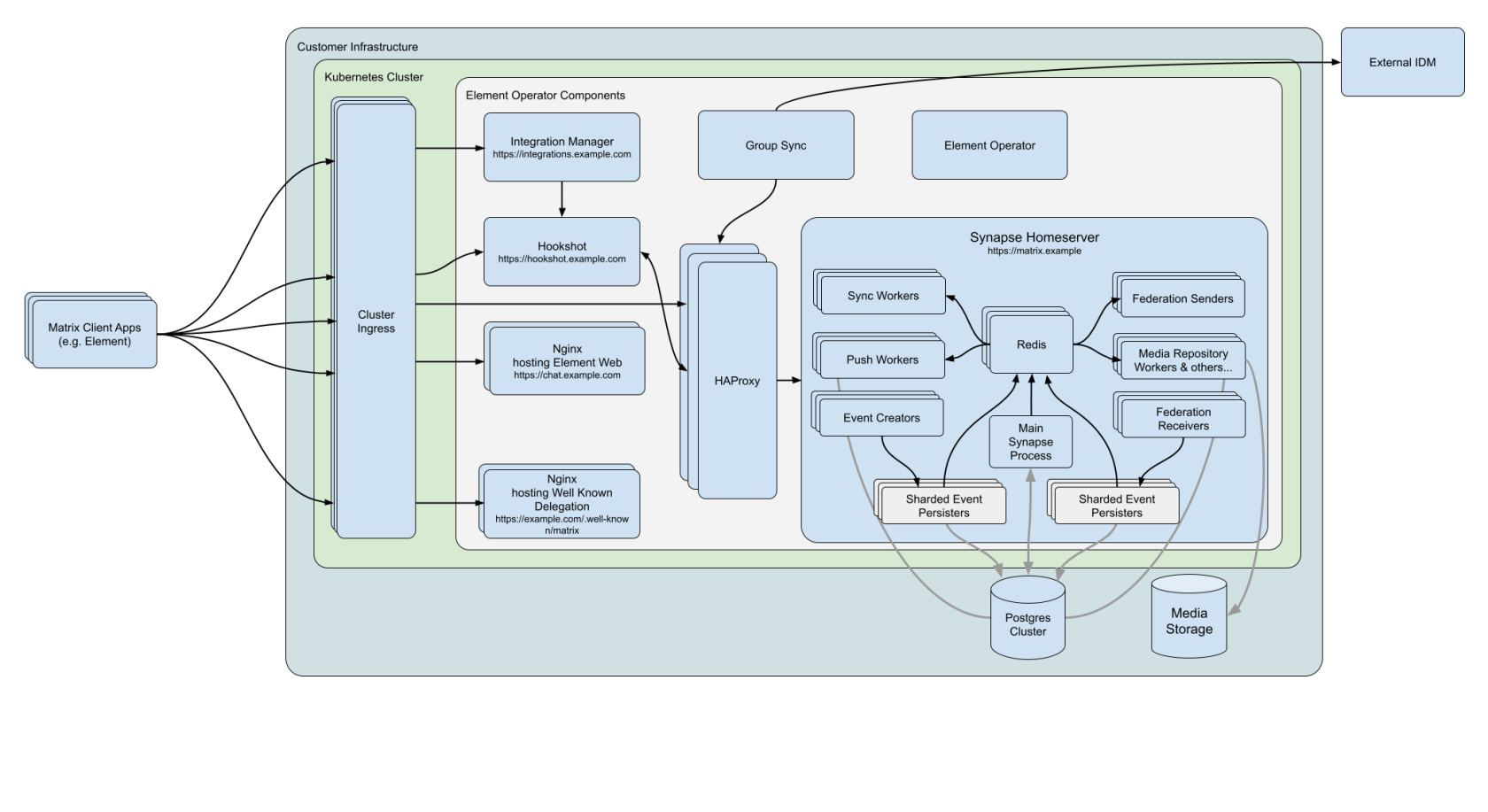Introduction to Element Enterprise
What is Element Enterprise?
Element Enterprise provides an enterprise-grade secure communications platform that can be run either on your own premise or in our Element Cloud. Element Enterprise includes all of the security and privacy features that you get with Element:
- Built on the Matrix open communications standard.
- Provides end to end encrypted messaging, voice, and video through a consumer style messenger with the power of a collaboration tool.
- Delivers data sovereignty.
- Affords a high degree of flexibility that can be tailored to many use cases.
- Allows secure federation within a single organisation or across a supply chain or ecosystem.
and combines them with the following unique Enterprise specific features:
- Group Sync: Synchronize group data from your identity provider and map these into Element spaces.
- Adminbot: Give your server administrator the ability to be admin in any rooms on your homeserver.
- Auditbot: Have an auditable record of conversations conducted on your homeserver.
- Chatterbox: Give your website a light-weight Matrix client for customers to chat with your company.
- Security and feature updates: Updates are easy to deploy and handled by our installer.
- Support: Access to the experts in federated, secure communications giving you confidence to deploy our platform for your most critical secure communications needs.
Given the flexibility afforded by this platform, ours has a number of moving parts to configure. This documentation will step you through architecting and deploying Element Enterprise On-Premise.
Single Node or Multiple Nodes?
Element Enterprise On-Premise can be deployed both to a single node or a set of multiple nodes. In the case of the multiple node deployment, this requires kubernetes, a container orchestration platform. In the case of our single node deployment, our installer deploys microk8s (a smaller distribution of kubernetes) and deploys our application to that microk8s instance.
In general, regardless of if you pick a single node deployment or a multiple node deployment, you will need a base level of hardware to support the application.
For scenarios that utilise closed federation, Element recommends a minimum of 4 vcpus/cpus and 16GB ram for the host(s) running synapse pods.
For scenarios that utilise open federation, Element recommends a minimum of 8 vcpus/cpus and 32GB ram for the host(s) running synapse pods.
At present, our single node configuration is only available as a Proof of Concept.


